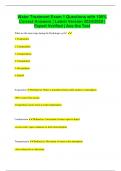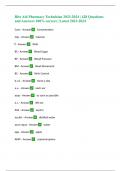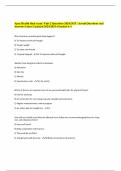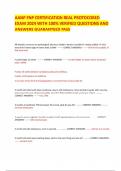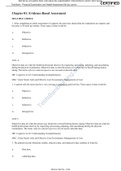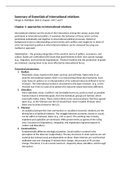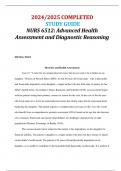Exam (elaborations)
Test Bank For Biology An Australian Focus 5Th Edition By Bruce Knox Pauline Ladiges Barbara Evans Robert Saint
- Course
- Institution
Chapter 03 Testbank Student: ___________________________________________________________________________ 1. In biological systems, energy can be stored as A. potential energy. B. kinetic energy. C. heat. D. mechanical energy. E. All of the answers are correct. 2. According to the first and s...
[Show more]




